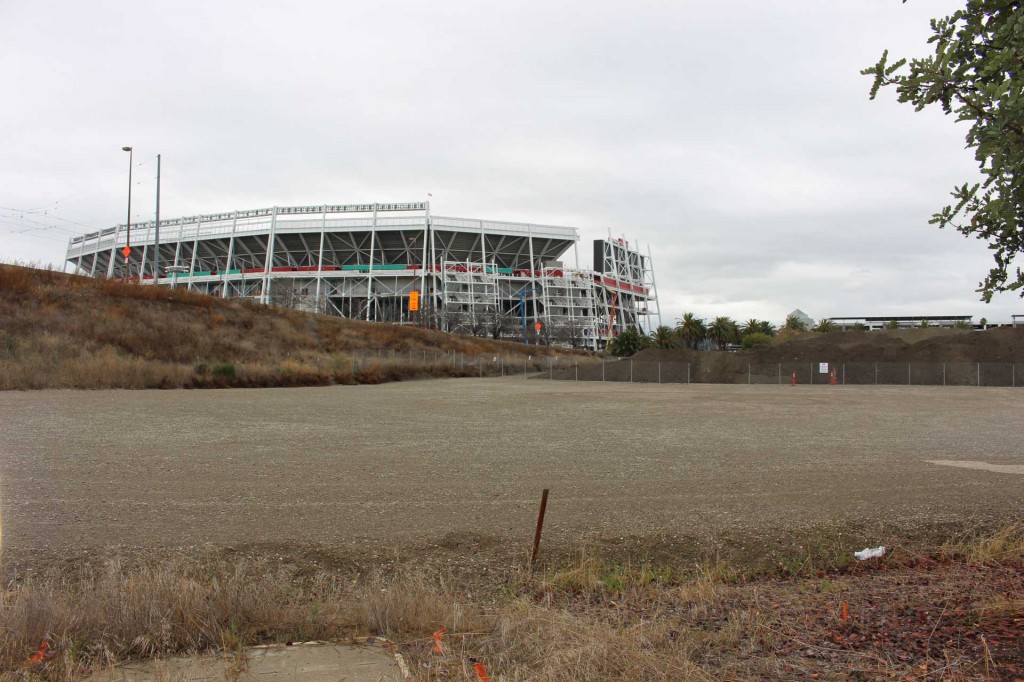With 16 months until Super Bowl 50 is held at the new San Francisco 49ers Levi’s Stadium, Santa Clara County is training law enforcement, hospital and airport workers to combat human trafficking, which some activists say seems to spike during mega sporting events.
The Super Bowl, like other mass gatherings, is often correlated with an increase in trafficking, due to the tens of thousands of people it attracts. More than 70,000 people will attend Super Bowl 50 in February 2016, and about one million people are expected to attend events during the week leading up to the game itself.
Officials in Texas, Louisiana, Indiana and, most recently, New Jersey, strengthened efforts to combat trafficking ahead of previous Super Bowls held in their states, including pulling officers from their regular details to focus on the problem.
But trafficking may be a particularly pronounced problem in California. The National Human Trafficking Resource Center, a toll-free, national hotline to which anybody can call, text or submit online tips to about potential human trafficking cases, received 35,889 signals nationwide in 2013. Of these, they received 3,445 tips from California alone.
There’s no hard data on how much human trafficking — a form of modern slavery where people profit from the control and exploitation of others — spikes during the Super Bowl. But a report by The Urban Institute, an economic and social policy think tank, included interviews with traffickers and found that it could double.

“Around big sporting events, [demand] increased 100 percent. In D.C. around election time, [demand increased] around 50 percent,” said a former trafficker, interviewed for the report.
That is one reason why anti-trafficking groups in the Bay Area are hoping to raise awareness in the community and enlist their help in combatting the crime.
Jay Rivera, communications manager of human rights organization California Against Slavery, says that many people think trafficking doesn’t happen in the United States but that it is very much a local problem.
Not For Sale, a nonprofit organization that raises awareness about sexual slavery, found that of 232 trafficking cases served by anti-trafficking organizations in Santa Clara and San Mateo counties between 2011 and 2013, 118 victims were born in the United States.
Human trafficking isn’t just a problem during the Super Bowl though, said Brian Wo, director of partnerships and co-founder of the Bay Area Anti-Trafficking Coalition. Advocacy groups say they don’t want vigilance to ebb and flow with large events and so the Bay Area Anti-Trafficking Coalition is working to set up a more permanent solution.
The Bay Area Anti-Trafficking Coalition is collaborating with the Stanford Law School and the South Bay Coalition to End Human Trafficking to create maps of hospitals and hotels in the Bay Area that have been trained to deal with human trafficking victims.
The resources will be rolled out at the Freedom Summit, a mass anti-trafficking gathering scheduled to take place at Levi’s Stadium next May.
Police departments are training officers about how to identify, assess and communicate with victims and guidelines on how to make arrests.
In the past, officers who weren’t trained to deal with human trafficking threw victims, often arrested for prostitution, in jail, which only added to their problems, said Sgt. Kyle Oki, who heads up the San Jose Police Department’s trafficking task force.
“Ultimately, you want to be able to prosecute [the trafficker],” Oki said. “But you don’t want to re-victimize the victim to do it.”
The Super Bowl puts the issue “in the spotlight and it’s an opportunity for people to be educated and engaged,” said Wo, explaining why advocacy groups are pushing to complete training and implement their plans before the game.
Asked whether he believed the Super Bowl actually increased human trafficking or if people simply paid more attention to it during the most-watched sporting event in the country, Wo said: “We don’t want to be known as the Super Bowl that proved the correlation.”
Where does trafficking happen?
*Note: The 23 cases (2.93 percent) that are both sex and labor and the 62 cases (7.90 percent) that are unspecified trafficking were not included in these infographics. (Data source: National Human Trafficking Resource Center (NHTRC) State Report.)
